
Essential HR metrics you need to implement today
We have talked a lot about employee evaluations, but we have not yet touched on the important topic of evaluating HR managers. More specifically, the HR metrics they should monitor and partially be responsible for. These are markers of employee status within the company – in other words, the state of personnel marketing, effective teamwork, finances in the HR field, and so on.
What are HR metrics, and why are they needed?
The indicators that HR specialists should monitor are called HR metrics – key ratios that help organizations track their human capital and measure the effectiveness of HR initiatives. In conjunction with an HR strategy, metrics provide the opportunity to see in a timely manner what is working well, what needs attention, and what to expect in the near and distant future.
Based on the results of the metrics, the strategy can also be changed – but with more justification. Their great advantage is that metrics are the only reliable way to timely track the onset of processes that negatively affect the team – for example, employee burnout.
Why is it essential to use HR metrics in work?
70% of employers acknowledge that basing work on analytics of human capital is the right approach, yet only 41% of companies actually use it when forecasting performance. Why is this happening? We have a few assumptions, the main ones being that HR reporting is not taken seriously, and few want to engage with it manually.
And if there have long been convenient tools to solve the second problem that calculate most metrics either automatically in real time or with 1-2 clicks, to influence the first situation, it is necessary to consider all the advantages of analytics.
In addition to the aforementioned advantages, be sure to pay attention to:
- Visibility of HR metrics for management. You cannot prove, for example, that employees are experiencing burnout until you show specific figures to the CEO or regarding turnover rates. A detailed report simplifies these efforts. Overall, the practice of making arguments using analytics is good advice for companies of any size; it should be developed as a habit.
- The ability to analyze hiring and attract the best talent. Hiring is a complex process consisting of several stages of pre-onboarding, onboarding, etc. To understand if these steps are working, metrics are needed. If you see that your recruitment and attraction activities are not working, and onboarding becomes a burden or routine, metrics can help you quickly change the situation.
- Determining employee and team effectiveness. If you have long blamed the sales department for underperforming targets, but metrics show high performance, think carefully about whether you are right to place the blame solely on one department.
- Analysis of engagement and shaping corporate culture. Reports will give you insights into how and how quickly your team is developing.
- Planning career decisions. Promotions and transfers, leadership assessments, analyzing the performance of "star employees" and employees at risk – all of this is the work of metrics.
Let's take a closer look at which HR metrics are being discussed.
What HR metrics exist?
Recruitment Metrics:
- Headcount: the total number of employees in your organization or a specific department that you can monitor.
- Demographics: characteristics of your workforce by age, gender, education level, years of experience, residence, work location, etc.
- Average time to hire: the average number of days between posting a job vacancy and the candidate accepting your job offer.
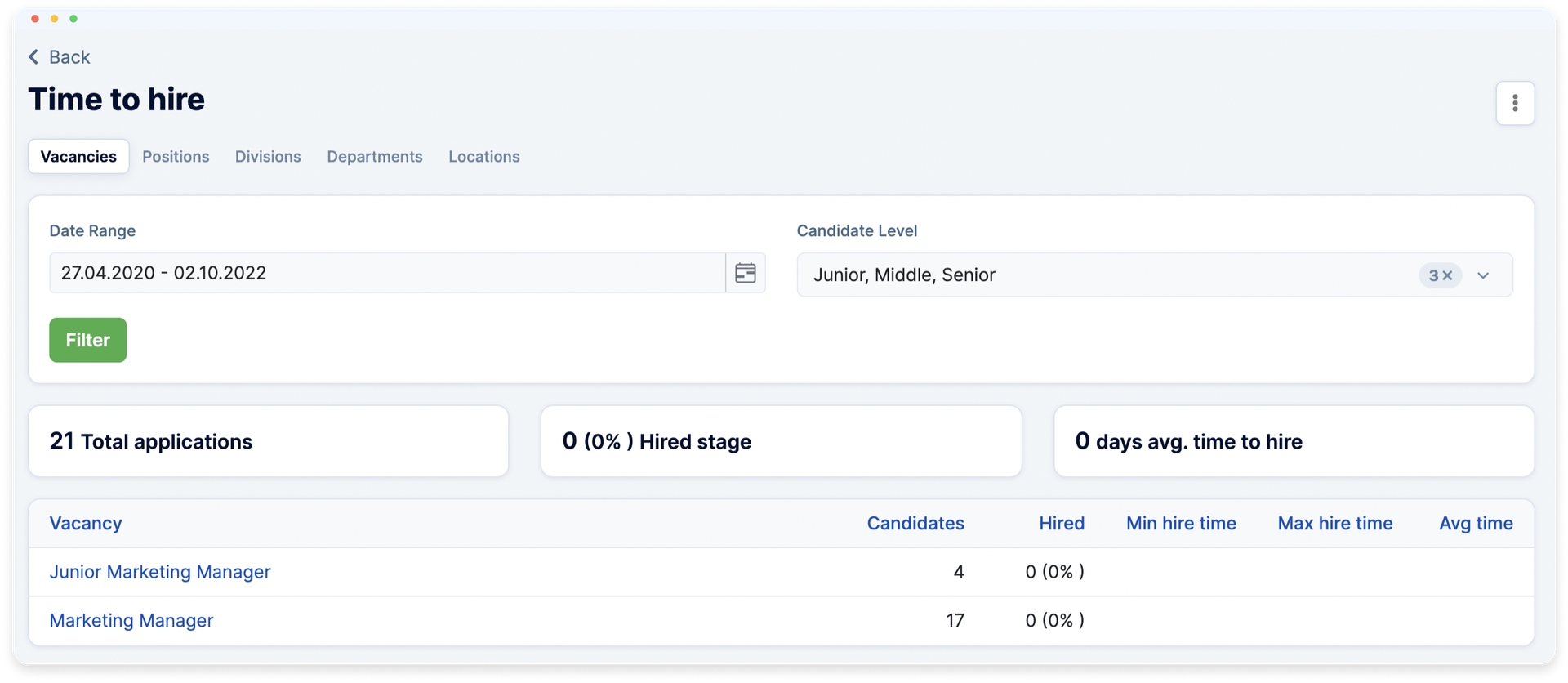
- Acceptance Rate: the number of job offers your organization sends to candidates divided by the number of candidates who accept the offer.
- Cost of Hire: the average cost of hiring a new employee, including both external and internal recruitment expenses.
- Onboarding Period: the time it takes for new employees to adjust to the organization and start working at maximum productivity.
- New Hire Turnover: the number of new employees who leave within a certain period, such as during their first year of employment.
Engagement and Retention Metrics:
- Employee Satisfaction: the number of employees who recommend your company as a good place to work, in relation to the number of employees who do not recommend it.
- Overall Turnover Rate: the number of employees leaving your organization over a specific period of time, divided by the average number of employees.
- Voluntary Turnover Rate: turnover that includes only those employees who voluntarily leave your organization.
- Talent Turnover Rate: turnover among high-performing and high-potential employees in your organization.
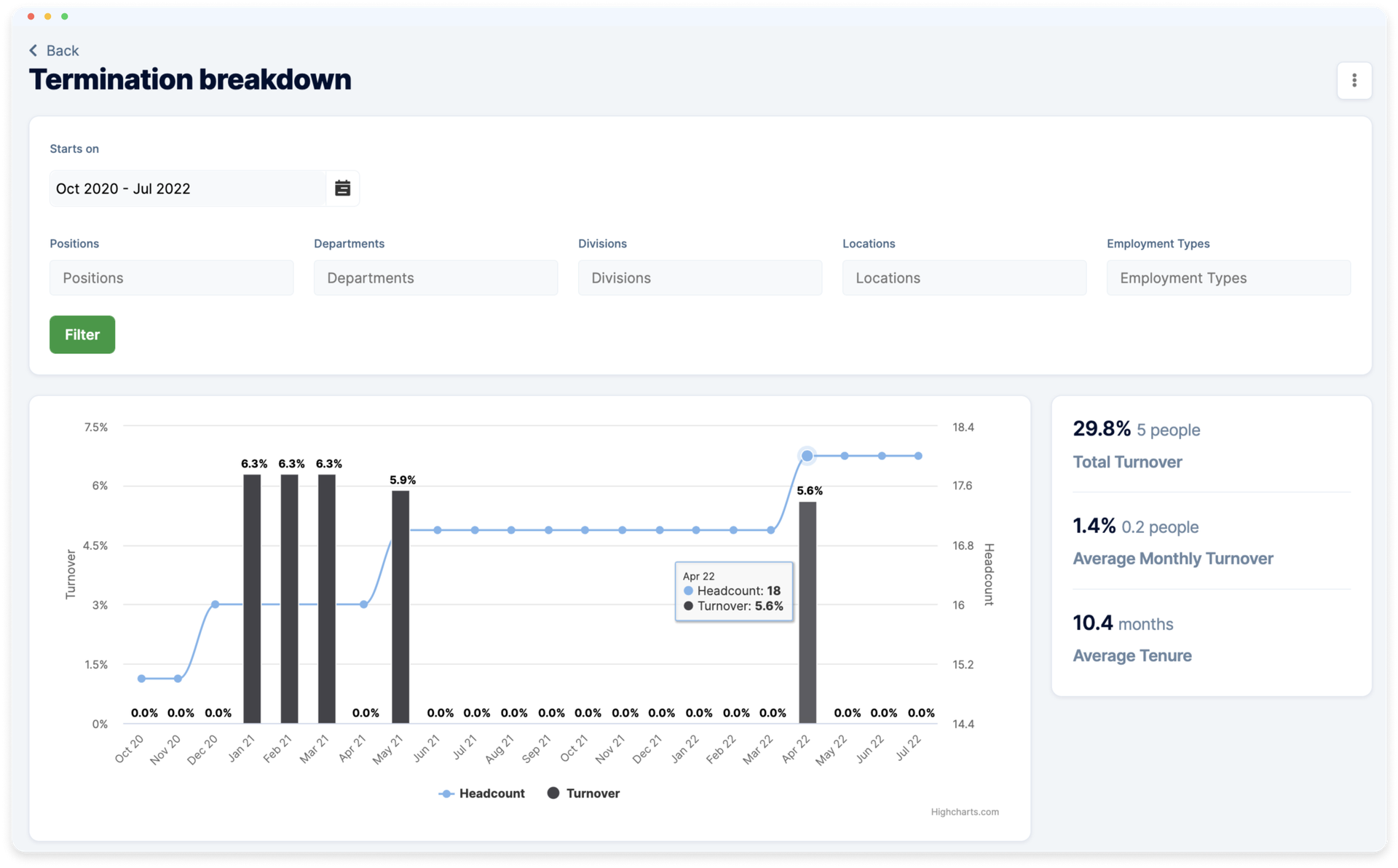
- Retention rate: a metric opposite to turnover – the number of employees who stayed in your organization over a certain period divided by the total number of employees.
- Manager-specific retention rate: retention metric broken down by individual teams and managers.
Time tracking metrics
- Absence Frequency: the average number of days employees are absent during a specific period of time, excluding approved absences.
- Manager-Based Absence Rate: the absence rate broken down by individual teams and managers.
- Overtime Hours: the number of overtime hours worked by employees over a specific period of time. You can calculate the average number or break it down by individual employees.
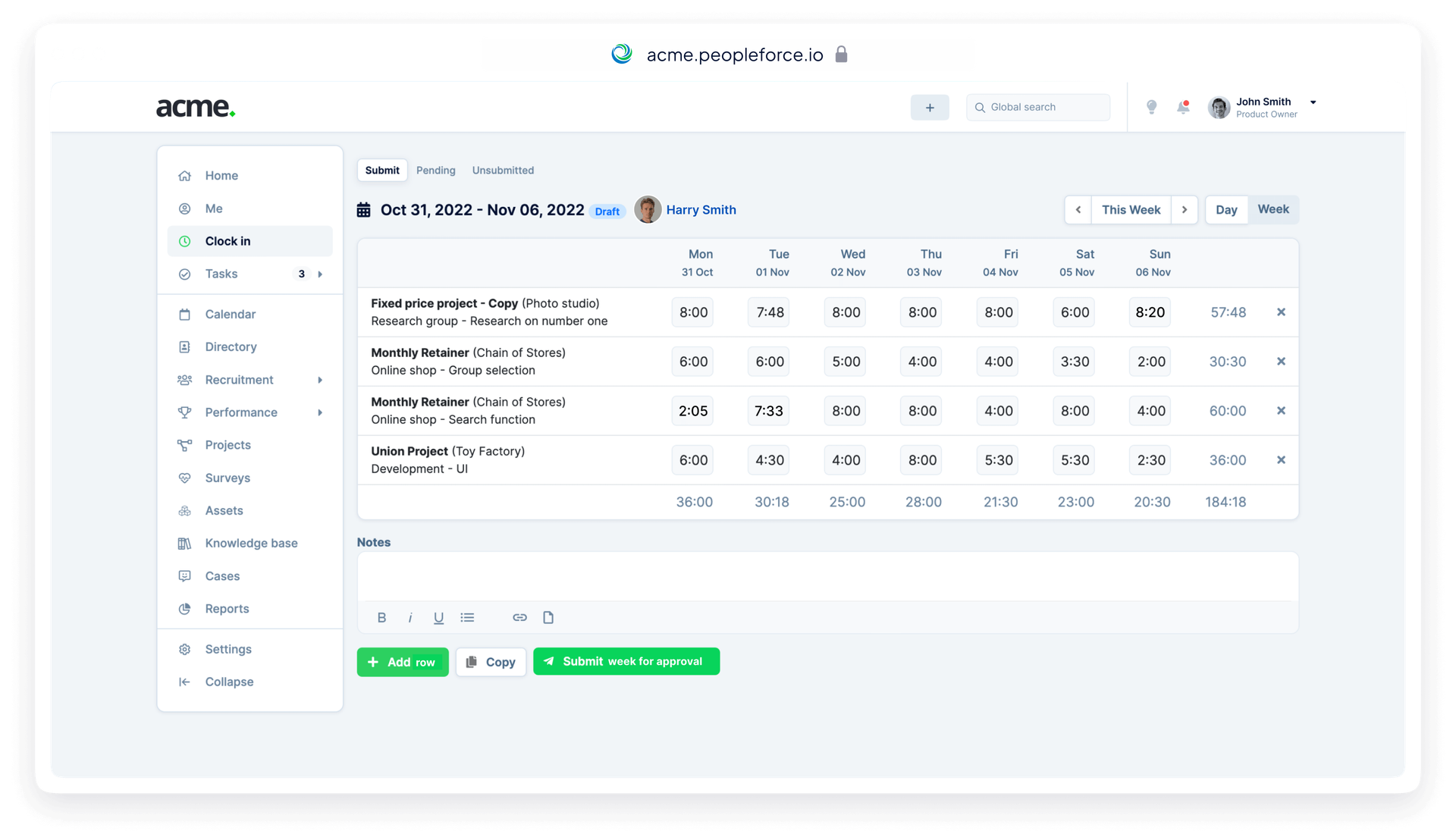
Performance Metrics
- Compensation size per employee: the total income divided by the total number of employees.
- Performance and potential: a matrix of nine blocks (9 boxes) that allows for classifying employees according to their effectiveness in the workplace and potential for developing leadership qualities.
- Employee effectiveness: tracked using self-assessments, expert evaluations, manager assessments, etc., including evaluation methods.
- Goal tracking: goals set by employees and their progress over a chosen period of time.
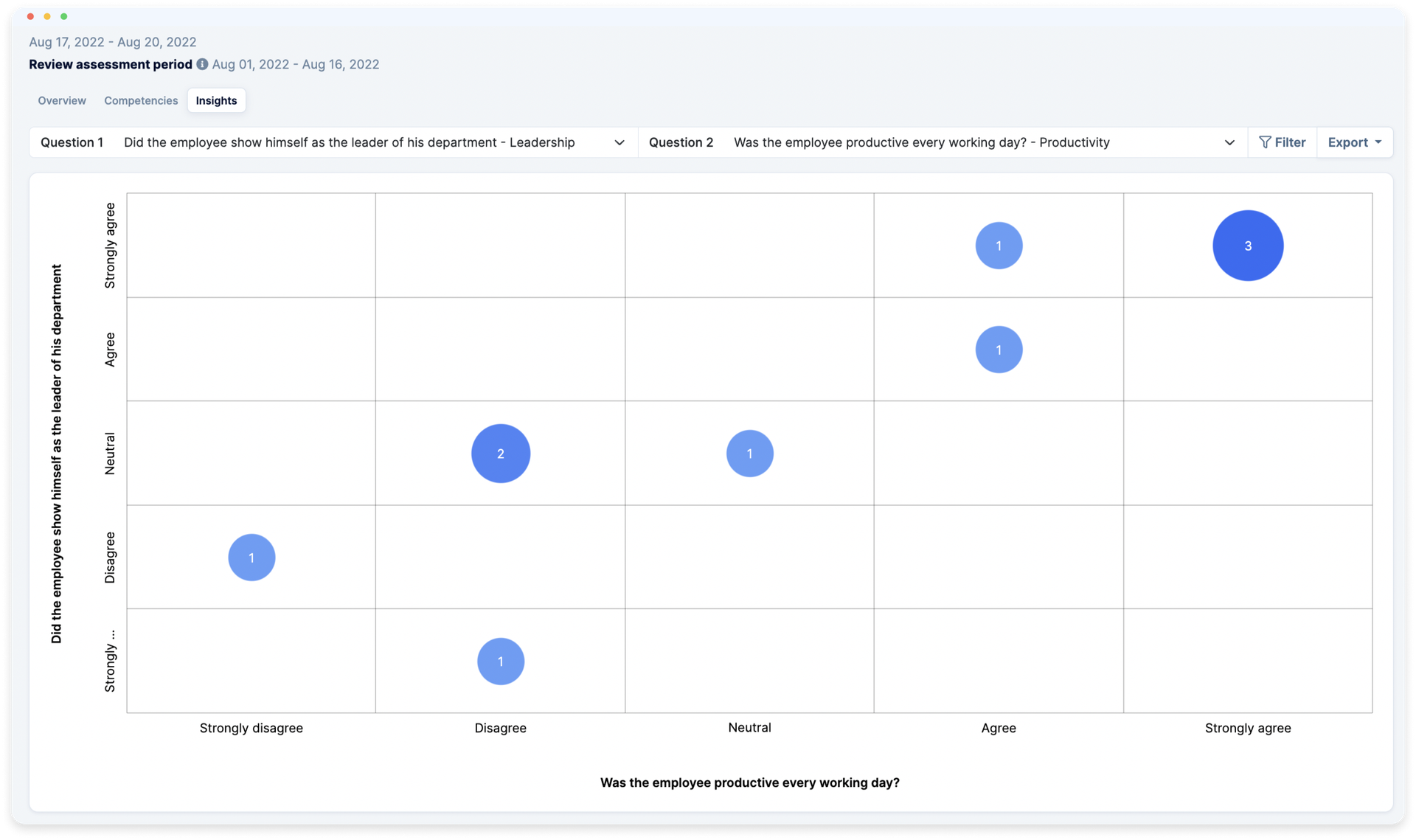
How to use HR metrics?
Each metric has its own calculation formula.
Let's take the turnover metric. Its formula will look like this:
Turnover = Number of employees who left in a year / Number of employees hired in a year * 100%
The results for this metric are interpreted as follows:
- Less than 25% - employee turnover indicators are under control
- More than 25% - employee turnover indicators are at risk
Example of using the employee turnover metric:
Suppose we have a company – a large supermarket chain, where the employee turnover rate is increasing. Initially, it is 20%, then it rises to 30% and 45%.
What it threatens: supermarkets will lack working personnel.
What we want: to reduce the turnover rate and keep it at a level of up to 30%.
What needs to be done to fix the situation: review salaries, compare them with the market salary level.
Additional points to consider: the average satisfaction level across the company (let's assume it is 5% in our network).
How we will know the plan worked: employee turnover will gradually decrease (from 45% to 40% to 35%) and satisfaction will increase (from 5% to 10%).
What other turnover metrics should we pay attention to?
- Turnover by departments
- To managers
- By reasons for dismissal
- Future plans
- Length of service in the company
- By positions
- Voluntary/At the initiative of the company
- By level of regret about leaving
- By employee effectiveness
How can HR metrics change your business?
At the very least, the necessity of using metrics can be argued as follows:
- Achieving a high level of professionalism
- Reasoned choice and formation of corporate culture
- Training personnel for transition to higher positions and internal recruiting
- Competitive differentiation
- Strategic advantage.
Remember that you don't have to dive headfirst into the metrics and impose on the team and management the need to count each of the aforementioned right away. For the time being, it is sufficient to define a list of 10-15 most important metrics and try in test mode whether you can handle their counting. If at the end you feel that the focus is correct, but you're lacking time - try HRM system tools.
Get started with PeopleForce today
Automate your HR routine to create a high performance culture in your company. PeopleForce is your best HRM alternative to stay business driven but people focused.
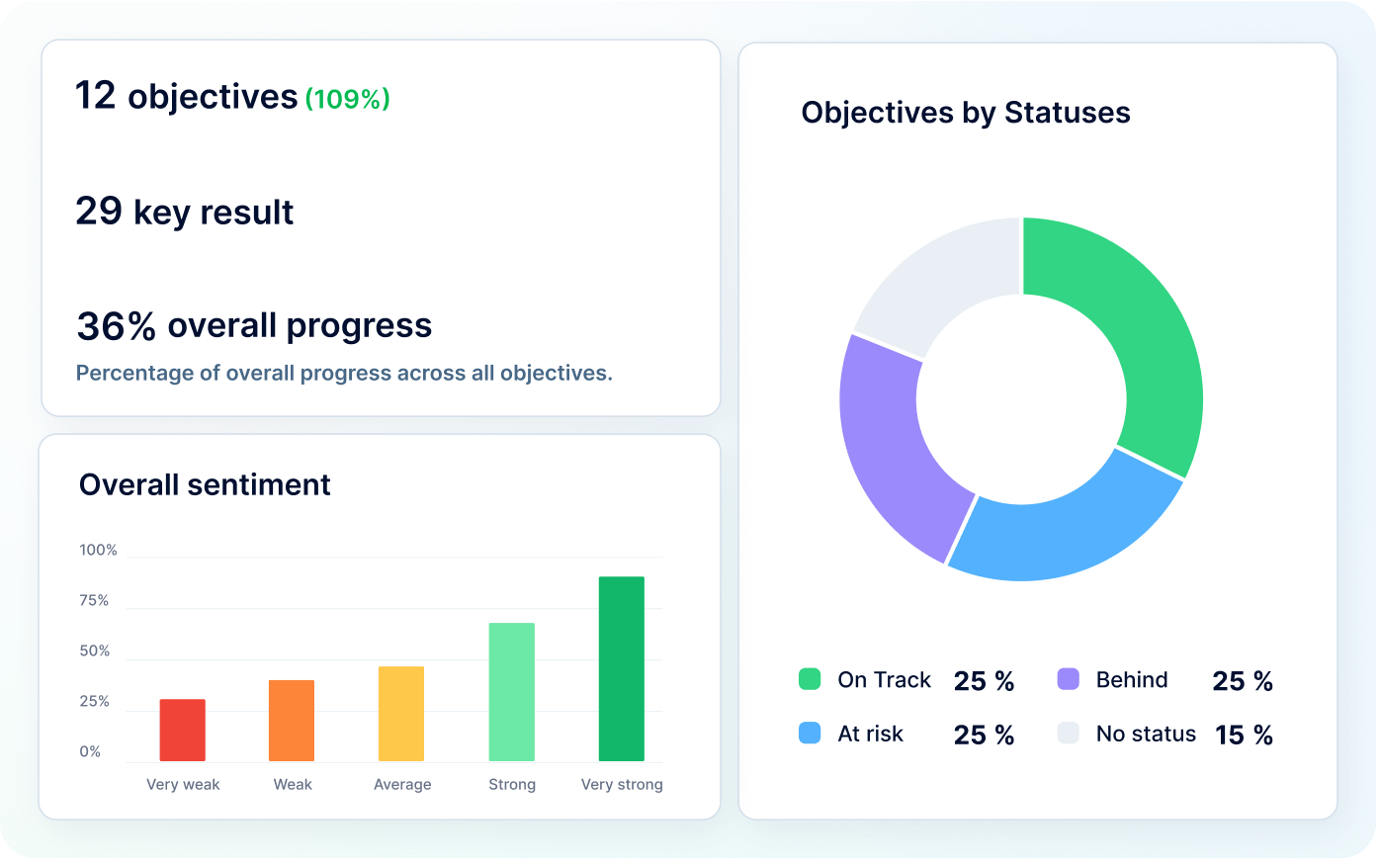
Recent articles
🎉 PeopleForce Wrapped 2025: a year of HR magic
2025 wasn’t just about shipping features — it was about making HR work better at scale. Let’s unwrap everything we built together.
OKRs vs. KPIs: Choosing the right framework
Unsure when to use OKRs or KPIs? Learn how to choose the right framework to maximize your team’s success.
Why OKRs feel like hell (and how to make them simple)
Why OKRs feel like chaos: missed goals, messy reviews, and burnout. Learn how to simplify goal-setting and reclaim clarity quickly.

